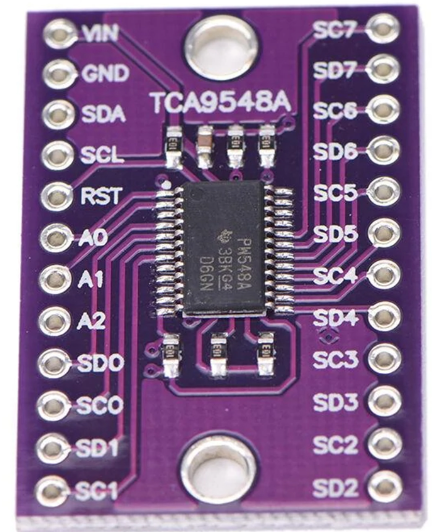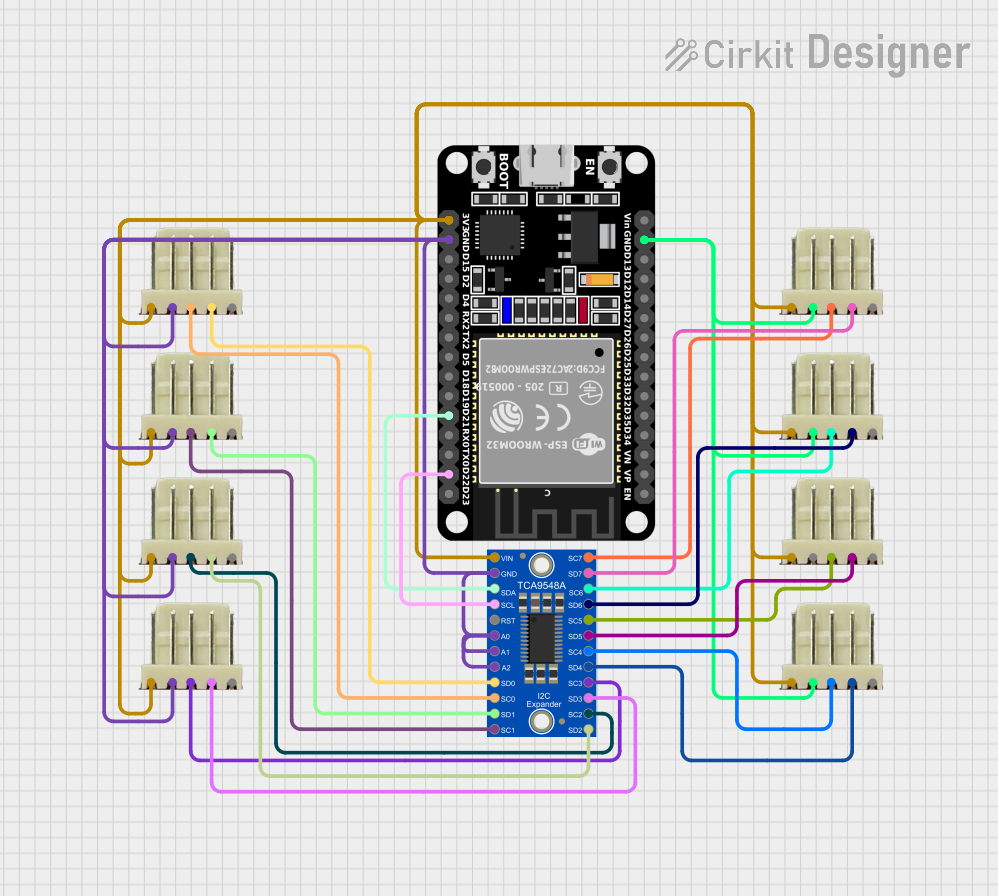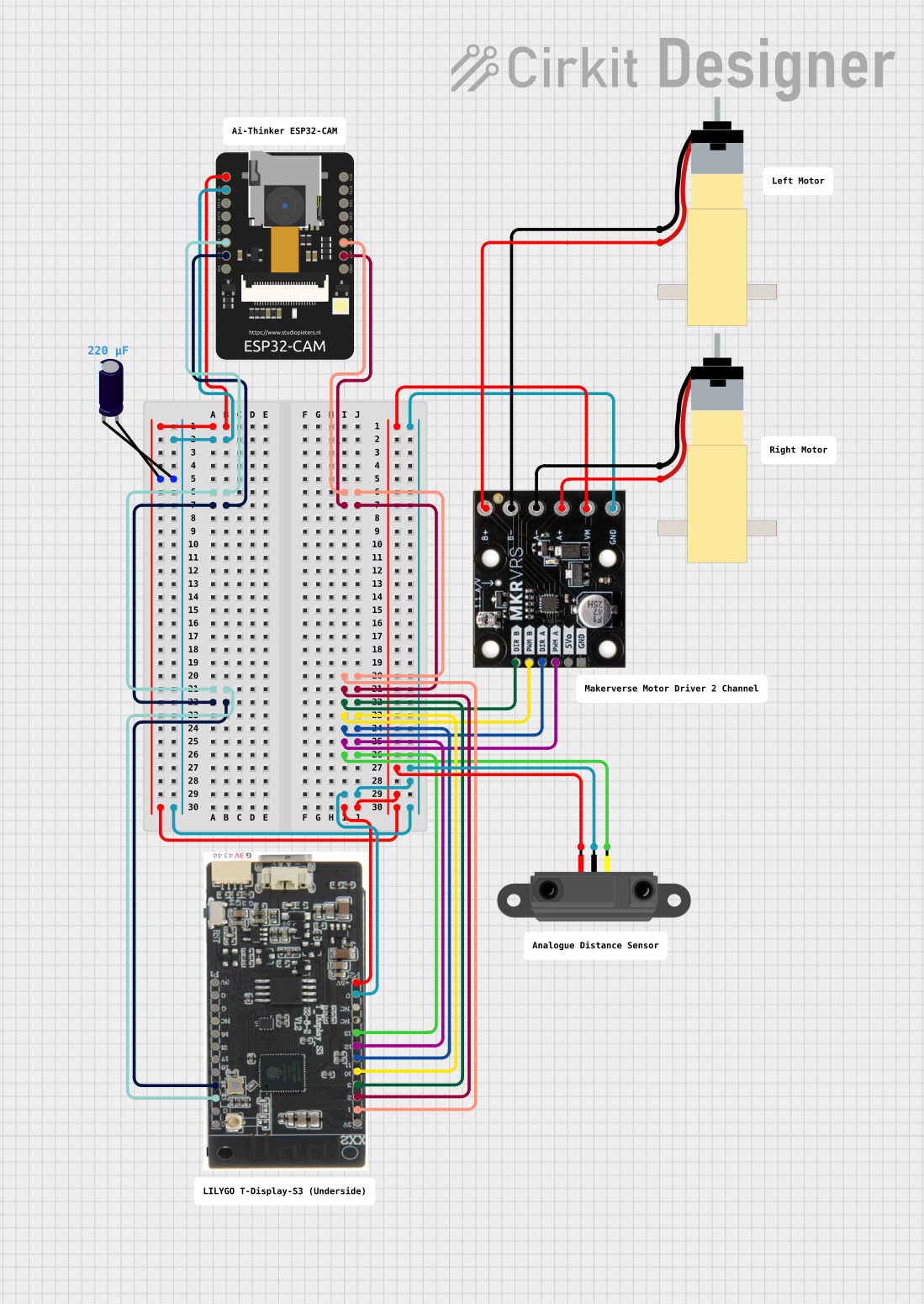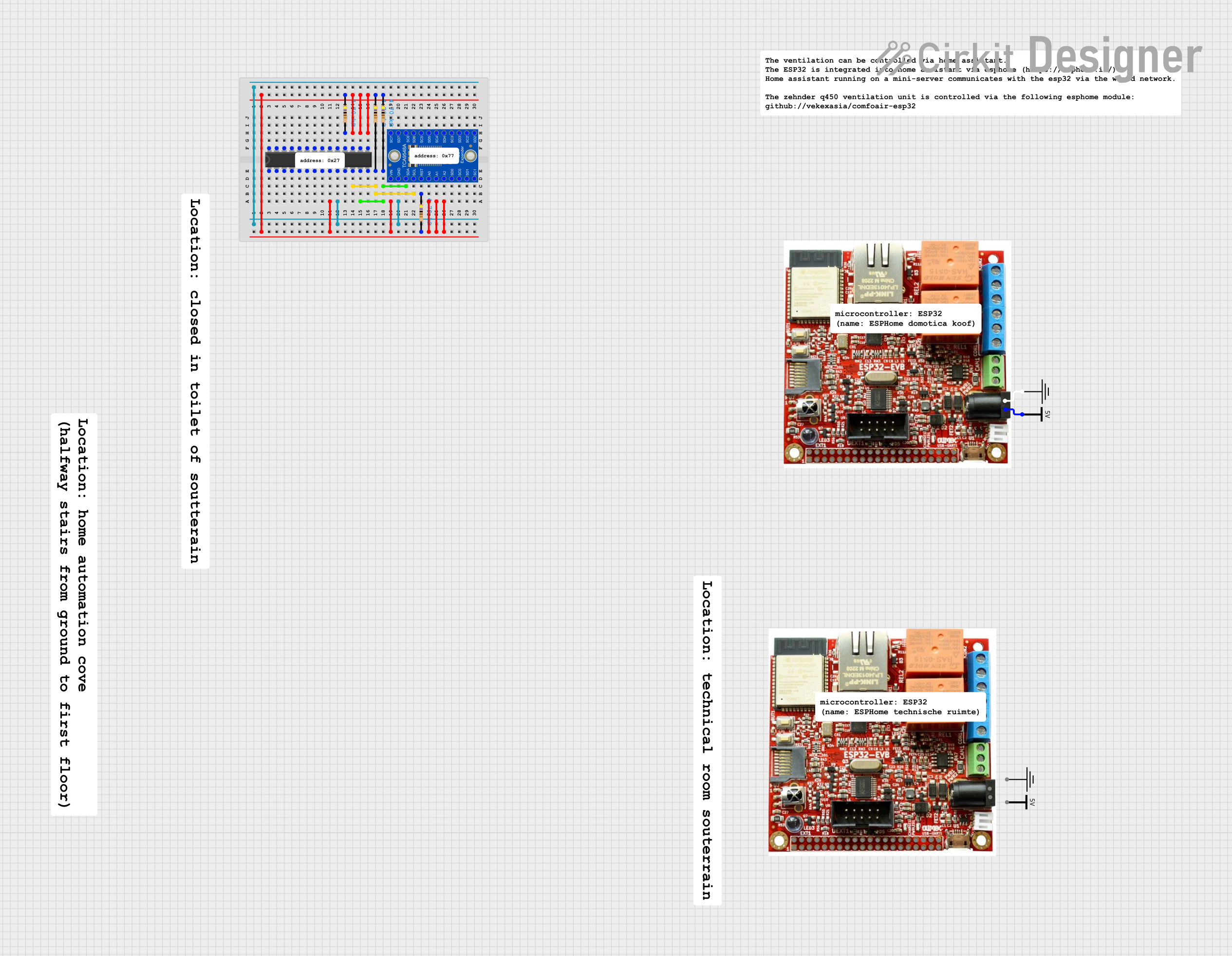
How to Use TCA 9548A: Examples, Pinouts, and Specs

 Design with TCA 9548A in Cirkit Designer
Design with TCA 9548A in Cirkit DesignerIntroduction
The TCA9548A is an I2C multiplexer that allows a single I2C master device to communicate with multiple I2C devices across up to eight independent I2C buses (channels). This component is particularly useful in applications where multiple I2C devices with the same address need to coexist on the same system. By isolating each device on a separate channel, the TCA9548A eliminates address conflicts and simplifies system design.
Explore Projects Built with TCA 9548A

 Open Project in Cirkit Designer
Open Project in Cirkit Designer
 Open Project in Cirkit Designer
Open Project in Cirkit Designer
 Open Project in Cirkit Designer
Open Project in Cirkit Designer
 Open Project in Cirkit Designer
Open Project in Cirkit DesignerExplore Projects Built with TCA 9548A

 Open Project in Cirkit Designer
Open Project in Cirkit Designer
 Open Project in Cirkit Designer
Open Project in Cirkit Designer
 Open Project in Cirkit Designer
Open Project in Cirkit Designer
 Open Project in Cirkit Designer
Open Project in Cirkit DesignerCommon Applications and Use Cases
- Expanding the number of I2C devices in a system
- Managing I2C devices with identical addresses
- Sensor arrays in robotics and IoT applications
- Multi-display systems
- Testing and debugging multiple I2C devices
Technical Specifications
Key Technical Details
- Operating Voltage: 1.65V to 5.5V
- I2C Address Range: 0x70 to 0x77 (configurable via A0, A1, A2 pins)
- Maximum I2C Clock Frequency: 400 kHz (Fast Mode)
- Number of Channels: 8
- Channel Isolation: Each channel is independently controlled
- Low Standby Current: 1 µA (typical)
- Package Type: TSSOP-16 or similar
Pin Configuration and Descriptions
The TCA9548A has 16 pins, as described in the table below:
| Pin Number | Pin Name | Description |
|---|---|---|
| 1 | A0 | Address selection bit 0 (connect to GND or VCC to set I2C address) |
| 2 | A1 | Address selection bit 1 (connect to GND or VCC to set I2C address) |
| 3 | A2 | Address selection bit 2 (connect to GND or VCC to set I2C address) |
| 4 | VCC | Power supply input (1.65V to 5.5V) |
| 5 | SDA | I2C data line (connect to master SDA line) |
| 6 | SCL | I2C clock line (connect to master SCL line) |
| 7 | RESET | Active-low reset input (pull high for normal operation) |
| 8 | GND | Ground |
| 9–16 | SD0–SD7 | I2C data lines for channels 0–7 (connect to slave devices on each channel) |
Usage Instructions
How to Use the TCA9548A in a Circuit
- Power the TCA9548A: Connect the VCC pin to a power source (1.65V to 5.5V) and the GND pin to ground.
- Set the I2C Address: Configure the A0, A1, and A2 pins to set the desired I2C address. These pins can be connected to GND (logic 0) or VCC (logic 1). The default address is 0x70 when all address pins are grounded.
- Connect the I2C Master: Attach the SDA and SCL lines of the TCA9548A to the corresponding lines of the I2C master device.
- Connect I2C Slaves: Attach the SDA and SCL lines of each slave device to the corresponding SDx pins of the TCA9548A. Each slave device should be connected to a separate channel to avoid address conflicts.
- Control the Channels: Use the I2C master to send commands to the TCA9548A to enable or disable specific channels. Only one channel can be active at a time.
Important Considerations and Best Practices
- Pull-Up Resistors: Ensure that appropriate pull-up resistors are present on the SDA and SCL lines of the master and each active channel. Typically, 4.7 kΩ or 10 kΩ resistors are used.
- Reset Pin: If the RESET pin is not used, connect it to VCC to ensure normal operation.
- Channel Switching: Only one channel can be active at a time. Switching between channels is done by writing to the TCA9548A's control register.
- I2C Address Conflicts: Avoid connecting multiple devices with the same address to the same channel.
Example Code for Arduino UNO
The following example demonstrates how to use the TCA9548A with an Arduino UNO to communicate with a device on channel 0.
#include <Wire.h> // Include the Wire library for I2C communication
#define TCA9548A_ADDRESS 0x70 // Default I2C address of the TCA9548A
// Function to select a specific channel on the TCA9548A
void selectChannel(uint8_t channel) {
if (channel > 7) return; // Ensure the channel is valid (0-7)
Wire.beginTransmission(TCA9548A_ADDRESS); // Start communication with TCA9548A
Wire.write(1 << channel); // Write to control register to enable the channel
Wire.endTransmission(); // End communication
}
void setup() {
Wire.begin(); // Initialize I2C communication
Serial.begin(9600); // Initialize serial communication for debugging
Serial.println("Selecting channel 0...");
selectChannel(0); // Enable channel 0
}
void loop() {
// Example: Communicate with a device on channel 0
Wire.beginTransmission(0x40); // Replace 0x40 with the I2C address of your device
Wire.write(0x00); // Example: Write a command or register address
Wire.endTransmission();
delay(1000); // Wait for 1 second before repeating
}
Troubleshooting and FAQs
Common Issues and Solutions
No Communication with Slave Devices
- Cause: Incorrect channel selection or I2C address.
- Solution: Verify that the correct channel is selected using the control register. Check the I2C address of the slave device.
Multiple Devices Not Responding
- Cause: Missing or incorrect pull-up resistors.
- Solution: Ensure that pull-up resistors are present on the SDA and SCL lines of the master and each active channel.
TCA9548A Not Responding
- Cause: Incorrect I2C address configuration.
- Solution: Verify the A0, A1, and A2 pin connections and ensure they match the expected address.
Channel Switching Not Working
- Cause: Incorrect control register value.
- Solution: Ensure that only one bit is set in the control register to activate a single channel.
FAQs
Q: Can multiple channels be active simultaneously?
A: No, the TCA9548A allows only one channel to be active at a time.Q: What happens if the RESET pin is left floating?
A: The TCA9548A may not operate correctly. Connect the RESET pin to VCC if it is not used.Q: Can the TCA9548A work with 3.3V and 5V devices simultaneously?
A: Yes, as long as the voltage levels are compatible and proper pull-up resistors are used.Q: How do I determine the I2C address of the TCA9548A?
A: The address is determined by the A0, A1, and A2 pin connections. Refer to the datasheet for the address mapping.